Peter Ireland – 16 May, 2013
Looking at Blackman's latest work it's almost impossible to comprehend he was born in 1929 - the beginning of the Great Depression, no less - and even just five minutes spent in his lively and engaged company can only reinforce that incredible impression. Equally unlikely is his having sustained an ever-developing practice in a city that hasn't been a hotbed of the avant-guarde since about 1936, hermits at Port Chalmers notwithstanding.
Dunedin
Gary Blackman
Late Entry: 17 photographs 2004-2012
26 April - 9 May 2013
Rita Angus used to complain that the only works of hers ever reproduced were 1936’s Cass and the Portrait of Betty Curnow of 1942. It’s a frustration possibly shared by photographer Gary Blackman, whose most frequently reproduced images are Six o’clock closing, Saturday, Dunedin, November 1952, Children watching gorse fire, North East Valley, Dunedin 1952 and The Active Eye‘s iconic Penguin, Blenheim, 1975. Think “Gary Blackman” and one of these three is bound to pop up on your mental screen. He’s been photographing consistently for well over half a century now, the author of a remarkable body of work, yet it’s hardly known north of Waitati for anything other than this trio of black and white reproductions.
As an artist Blackman endures several disadvantages in terms of profile: he’s in his 80s, he lives in Dunedin and he’s not perceived as an “art photographer.” Only being hung, drawn and quartered offers a more daunting set of prospects. Looking at his latest work it’s almost impossible to comprehend he was born in 1929 - the beginning of the Great Depression, no less - and even just five minutes spent in his lively and engaged company can only reinforce that incredible impression. Equally unlikely is his having sustained an ever-developing practice in a city that hasn’t been a hotbed of the avant-guarde since about 1936, hermits at Port Chalmers notwithstanding. And, down there, the pre-eminent art photographer is probably still George Chance.
In terms of the medium itself, photography’s higher profile now is a very mixed blessing. The more that contemporary photographs resemble current notions of art and the more that particular photographers are promoted by the art institutions, the more the work’s acceptable to art collectors and the auction system. But, the more photographic imagery connects to its own photographic tradition the less acceptable it is to this hand-in-glove phenomenon of status and trade, dooming the imagery to the confines of illustration and the perception of being “merely” subject matter. And the tendency of documentary to have a political edge remains a disincentive in the construction of art collections. Looking good is a world away from good looking.
One of the significant values of Blackman’s oeuvre is just how it connects to the photographic tradition, and thus partially explains why his work is so little known and appreciated. His father, Lance, was an active member of the Dunedin Photographic Society, so Gary grew up in a sympathetic environment, at least with regard to actual practice. His view of the imagery, as a rookie modernist, was less empathetic however, because he was aware of the likes of Atget, Weston and Brandt, but when in 1950 John Pascoe’s book The Mountains, the Bush and the Sea came out, he knew what he had to do, signing up to the documentary approach with all the fervor, focus and energy of a young man on a mission.
The documentary approach has its own history of course, but its various manifestations form a kind of reef on which credibility and acceptance founder when the art world’s attention comes to it. It’s a seemingly impenetrable wall. “Just how can this stuff be art?” Part of the mix right now is a thing often called the New Documentary, an institutional strategy more than an art movement, where the attempt to bet both ways ends up falling between two stools, and where younger - and not so young - photographers with a yearning to be noted as artists stray into a blurry postmodern world where the raw meat of rage has been replaced on the menu by the milk pudding of narcissism followed closely by the after-dinner mints of ambition. Sweet without but sour within.
Blackman has segued with consummate ease from his modernist origins to a postmodern present, not because he’s a smooth operator but because it turns out what he’s been documenting all along is a kind of history of photographic practice. For him it’s not a matter of choosing the current style, anxiously needing to be “in the swim”; it’s simply an ability to breathe the air he’s in, unaffected by any of the anxieties attendant on art world existence. He’s just too fascinated by how the world ticks to be side-tracked by concerns about what his “profile” might be. “Segued” might not be quite the right word in this scenario. It’s more a case of a cross-fertilisation, because, in retrospect, it seems that even his modernism involved quotation.
Professionally he was scientifically trained, not the usual avenue for a budding artist, and something of this experimenting and analytic approach has been a constituent component of his photography throughout his career. It’s not unknown for an artist in middle age to settle into a comfortable, signature style (or else struggle after novelty, which is even more tragic), but Blackman has pursued experiment and analysis consistently, refreshing his style with genuine innovation for over half a century. For instance, he was an early - if somewhat closeted - enthusiast for colour in the later 1950s and ‘60s when it was frowned on by “serious” photographers, and he was one of the first to pick up on the potential of polaroid in the later 1970s, taking part with Janet Bayly and Jane Zusters in Luit Bieringa’s National Art Gallery Polaroids show of 1982. More recently he’s embraced very early the possibilities offered by digital, without being dismayed by the purist position or distracted by the cornier manipulations of photoshop, and with the gusto of a man a third of his age.
Exactly a decade ago Justin Paton curated an extensive survey show of Blackman’s work at the Dunedin Public Art Gallery, and despite attempts to tour it, it never travelled. A classic Great Lost Opportunity. Late Entry is a concise update of an aspect of Blackman’s work, his “street” photography, the title of the show stylishly and wittily referencing both the photographer’s age and his status in the pantheon of contemporary New Zealand practice.
If there is indeed a New Documentary worthy of the tradition, it’s possibly street photography. Less heavy-handed morally and more visually abstract than “traditional” documentary, where the message was clear and the subject matter obvious, the emergence of street photography is a natural development: smarter, more subtle, and more attuned to the now of the 21st century. Peter Black’s work is possibly the exemplar of this new stream of conscience, his recent book The grass is awfully green demonstrating just how vigorous and challenging the documentary tradition remains. Blackman’s just as sharp-eyed and formally adept but his imagery is as more about perception - our being alert in and to the world - than paralleling Black’s raw meat rage. They’re both politically acute of course - as to perceptiveness’s threat to power - which is the gift documentary keeps on giving, and the source of its discomfort for the comfortable.
Like any artist doing the job culture requires - as opposed to what the market demands - Blackman mines the messy particulars of the world, artfully shaping a particular response that opens our eyes, recharges our hearts and sharpens our minds as citizens, not consumers. His might be a late entry, but it’s right on the button.
Peter Ireland

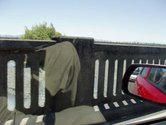
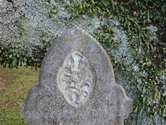
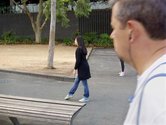
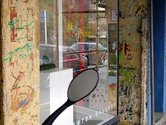

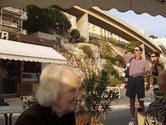
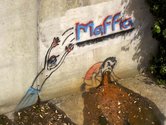
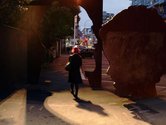


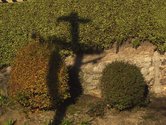
 Two Rooms presents a program of residencies and projects
Two Rooms presents a program of residencies and projects Advertising in this column
Advertising in this column



This Discussion has 0 comments.
Comment
Participate
Register to Participate.
Sign in
Sign in to an existing account.